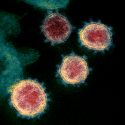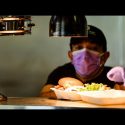COVID questions: vaccination distribution, development
Editor’s note: We will be publishing answers to questions about COVID-19 and the pandemic each week in this COVID questions column. If you have a question, please email it to covid19update@uc.wisc.edu.
Q: How is vaccine distribution decided?
A: One of the first questions you have to ask yourself is, “what would be a fair way to handle this problem of scarcity?” There are any number of ways you could try to do that, and each one has its own version of fairness, whether it’s about focusing on the needs of vulnerable people of about trying to make a more functional society, or trying to slow the transmission of the pandemic.shut
Lotteries may seem very fair because they’re completely random, but they may not give you your biggest bang for the buck. It may not help save the most lives, it may not slow the pandemic the most. If you want to slow the pandemic, you’re going to try to look for the people who have a high risk of exposure and a high risk of transmitting them through their jobs, such as service workers or caregivers with personal hands-on work with patients.
Maybe you want to focus on trying to reduce the number of people who actually die from the virus, so you’re going to be looking at people with underlying diseases, or they are over 70 years old or have other kinds of medical vulnerabilities. Maybe your first thought is to make sure that the rest of us can live long enough to get the vaccine, so we need to make sure to keep the health care system running so you’ll focus first on health care workers. You could also talk about keeping the most essential services running, such as food service, or those who face tremendous inequities.
The challenge is to identify our goals and then match the goals to the particular priorities that are going to make the most sense to achieve them.
– Alta Charo, Law and Bioethics professor, UW–Madison Law School, as shared from the UW Now livestream event on Dec. 1, 2020. Watch the full livestream here.
Q: How were the vaccines developed so quickly?
There has been an unprecedented global effort to develop COVID vaccines, including collaborations between companies and countries. With this widespread sharing of information, people are willing to give up their scientific discoveries for the betterment of others. A lot of money is being put into research and development of the vaccines, and there’s an element of international competition that’s driving investment from other countries. Additionally, we’ve had prior outbreaks with other coronaviruses, including MERS and SARS. Both of those diseases died out on their own but gave us a lot of information.
Roughly 1 in 100 vaccines make it to market. There are 48 COVID-19 vaccine candidates in various stages of clinical trials and 164 in the pre-clinical phase. Among these, there’s probably more than one “winner” that will help us get out of this pandemic.
The usual paradigm for vaccine development spends years on each phase, and large-scale manufacturing typically only happens after the vaccine is licensed. It’s not until then that manufacturers are willing to make lots of doses. The U.S.-based Operation Warp Speed removed some of the financial risk to the companies so they could focus on clinical development while at the same time ramp up manufacturing development to be able to turn on this large-scale manufacturing quite quickly.
While everyone was on board with trying to make things more efficient, back in September leaders from the major vaccine manufacturers pledged that they would continue to work through the scientific process without cutting any corners.
– James Conway, associate director at UW–Madison’s Global Health Institute, as shared during the UW Now livestream event on Dec. 1, 2020. Watch the full livestream here.
See more answers to COVID questions at https://news.wisc.edu/tag/covid-questions/. Also, visit our COVID-19 impact site.
Tags: COVID questions, covid-19, health & medicine



